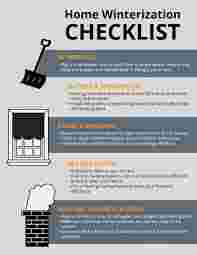Winter can be a beautiful season, but it also brings cold winds, frost, and higher energy bills. Preparing your home for winter is important to stay warm, save money, and prevent damage. The good news is that you don’t need to spend a lot of money to make your home cozy and energy-efficient. With a few careful steps and simple strategies, you can winterize your home on a budget.
The first thing to focus on is sealing your home. Cold air can sneak in through cracks, gaps, and poorly sealed doors and windows. You can use weatherstrips, caulk, or draft stoppers to close these openings. This is a low-cost method that can save a lot on heating bills. Even small gaps around windows or under doors can let in cold air, so checking carefully and sealing them makes a big difference. The warmth inside will stay longer, making your home feel cozy without extra energy use.
Windows are another area where you can save money and stay warm. Thin curtains or old blankets can be used to cover windows at night to prevent heat from escaping. You can also apply clear plastic film on window panes. This extra layer works like insulation, keeping cold air out and warmth in. During the day, open curtains to let sunlight naturally heat the rooms. Using simple items that you already have at home is an easy and cheap way to improve comfort during winter.
Insulating doors and floors is also important. Cold air often enters under doors or through uninsulated floors. Placing rugs on bare floors can make walking more comfortable and prevent heat loss. You can also use old towels or fabric to block drafts under doors. These small steps are inexpensive but help your home feel much warmer. You don’t need to buy expensive materials to make a noticeable difference.
Heating systems should also be checked before winter starts. If you have a furnace or heater, cleaning and maintaining it ensures it works efficiently. Replace filters if needed and make sure vents are not blocked. Even adjusting the thermostat by a few degrees or using a timer can reduce energy bills. By keeping your heating system in good condition, you can avoid wasting energy and stay warm comfortably.
Another tip is to make your home feel warmer without turning up the heat. Layering blankets, wearing warm clothing, and using hot water bottles can help. Small habits like drinking warm tea, closing doors to unused rooms, or rearranging furniture near heat sources make a noticeable difference. Some people use electric clothes during winter, like heated jackets or socks, to stay warm without relying entirely on home heating. These options are convenient, affordable, and energy-efficient.
Lighting and electricity use can also affect your budget. Using energy-saving bulbs, turning off lights when not needed, and unplugging devices can save a few dollars each month. You don’t need to make big changes to see small savings. Even adjusting how you use appliances and lights can help reduce winter expenses.
Kitchen and water areas are worth attention too. Running hot water efficiently, fixing leaks, and covering pots while cooking helps conserve heat and energy. Small steps in daily routines add up over time. Installing inexpensive faucet aerators or insulating hot water pipes can also save energy without costing much.
Roof and attic are sometimes overlooked but play a big role in staying warm. Make sure your attic is properly insulated to prevent heat loss from the top of your house. Check the roof for leaks or missing shingles. Maintaining your roof is not only a winter preparation step but also prevents bigger repairs later, saving money in the long run.
Ventilation is also important for a healthy home. While sealing your house keeps cold air out, it is good to allow fresh air occasionally. Opening windows for a few minutes, even in winter, helps prevent moisture buildup and keeps the air fresh. Proper ventilation ensures your home stays warm, safe, and comfortable.
Finally, winterizing your home is not just about temperature. It is also about creating a cozy and safe environment. Small touches like warm lighting, rugs, and comfort items can make a big difference. Winter can be enjoyed even on a budget if you plan, prepare, and use simple solutions. Every small step, from sealing drafts to using inexpensive warmth strategies, contributes to a comfortable and energy-efficient home.
By focusing on insulation, heat conservation, and simple daily habits, you can winterize your home without spending a lot. Budget-friendly solutions, such as using blankets, sealing windows, and layering clothes, make your home feel cozy and safe. Winter doesn’t have to be stressful or expensive. With a little preparation, you can enjoy the season, stay warm, and save money at the same time.




